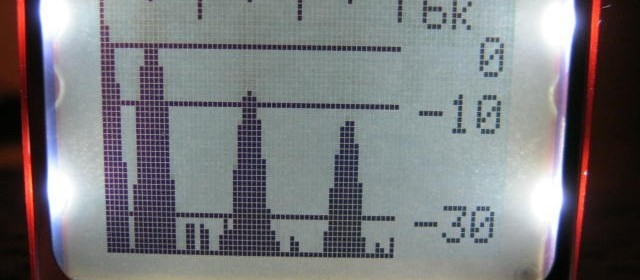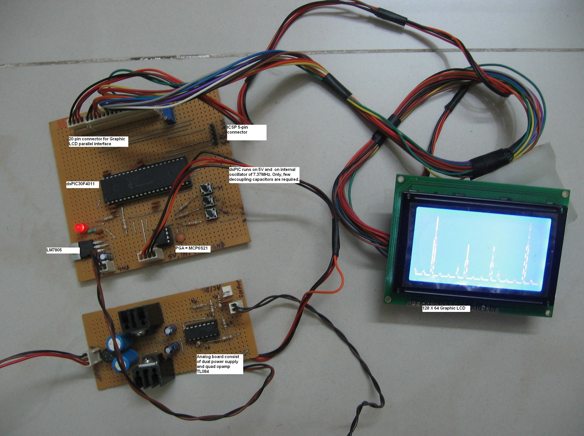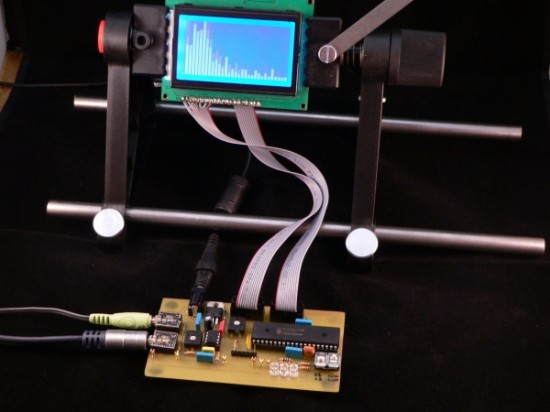Spectrum analyzer code for Arduino platform

Spectrum analyzers measure the frequency components contained in an input signal and displays their amplitude as a function of frequency. The amplitude is shown on the y-axis and the frequency in the x-axis. They are useful in computing transmitter and receiver RF power at antenna tower station, measuring the bandwidth of a transmission channel, detecting interference in channels, computing transmission losses, etc. For basic DIY applications, there is a spectrum analyzer code from agp.cooper for Arduino platform. It is ported to ATTiny85 but can be easily used with other Arduino compatible processors. It uses Goertzel’s algorithm with a Hamming window for DFT computations and Nokia PCD8544 LCD for displaying the signal strengths as a function of frequency.




